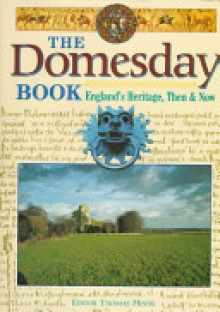
Again, this is a free read you can find here:
Unknown London by George Walter Bell (1919)
At the moment the short version of this is: imagine an older relative rambling on about historic things that no one pays attention to anymore (kids these days, etc) and going off on historical tangents. At the same time patting himself on the back for knowing about these hidden places. It's definitely dull in spots, but I'm amused.
Mostly I'm really enjoying finding out what's changed since the 1919 publication date. The book itself was republished - and I think updated? - after 1919, so Bell may have made edits himself. (There's also a sequel that I'm going to read too, also a free-online ebook.)
[Trying an experiment here to see if this will link properly - trying to link you directly to the online scanned pages of this book - I'll note it in parentheses after the links. Let me know if it doesn't work.]
So far I've enjoyed seeing the photo of the shrine of Edward the Confessor surrounded by protective sandbags. (This page, if I'm linking correctly.) I think I'm so used to thinking about the precautions London had to take during WWII that I forget about the same thing occurring during the first world war.
The chapter on the Domesday book (that's a link to page) alerted me to the fact that the Public Record Office has now merged into The National Archives. And you can actually read as much of the Domesday book as you can stand online - because it's all been digitized. (More on the history of the book.)
The chapter An Old City Merchant's Mansion (link to page), has a bit of a sad "where is it now" ending. After searching a bit for No 34 Great Tower Street and coming up empty (and seeing nothing like it on Google maps), I did find a history book noting that this site was bombed and destroyed in the second world war. Same place, because it had this same image of the house: link to page. You'd never guess that particular city house was one of the many built immediately after the great fire of London, would you? It had all of the original woodwork and fireplaces in it as well. Sad.
Currently reading Roman's London Baths (link to page), and I'm already sidetracked by another story:
Roman Baths, Strand Lane (wikipedia)
"...The baths have a historical reputation of being Roman in origin. Although Roman London lay 1 mile (1.6 km) to the east, antiquarian finds of a Roman coffin and Roman pottery vessels are recorded on the Greater London Historic Environment Record from this part of the Strand. The visible remains, which lie 4 feet 6 inches (1.4 m) below the modern street level, date from a 17th-century refurbishment on the campus of King's College London.
...The true origin of the baths is lost in time, but it may be that they were built as cisterns for Arundel House over the spring. They were subsequently lost in the 16th century when the estate was broken up, the area was then built over by row houses, and later rediscovered after a fire in 1774."
The old cold bath that’s not that old
‘Roman’ Bath, off Surrey Street, Strand, WC2
(Hidden London, The Guide)
"Victorian Londoners were a gullible lot, though they thought themselves highly sophisticated. When the owner of a little-known plunge pool suddenly began to promote it as dating from the first century ad, almost everyone was taken in.
...To be fair, the brickwork does bear a Roman resemblance – and there was little evidence to contradict the story of its ancient origin – but historians are now sure that the bath dates from the early 17th century.
Some have suggested that it was constructed as a spring water reservoir for Arundel House, the home of Thomas Howard, 2nd Earl of Arundel. Or perhaps it was created as an ornamental accompaniment to the ‘Arundel marbles’ – the hundreds of Roman statues, busts, sarcophagi, altars and fragments with which the extravagant earl adorned the extensive grounds of his mansion. Thus, right from the start, it could have been intended to look like a Roman bath – so maybe those gullible Victorians could be excused."
I've just started this chapter so will see how much depth the author puts into questioning whether the baths are Roman. (First page shows some skepticism.) While wikipedia sort of skims the "Roman or not" bit, it wouldn't be the only famous tourist attraction that wasn't historically what it was claimed to be.

 Log in with Facebook
Log in with Facebook 







